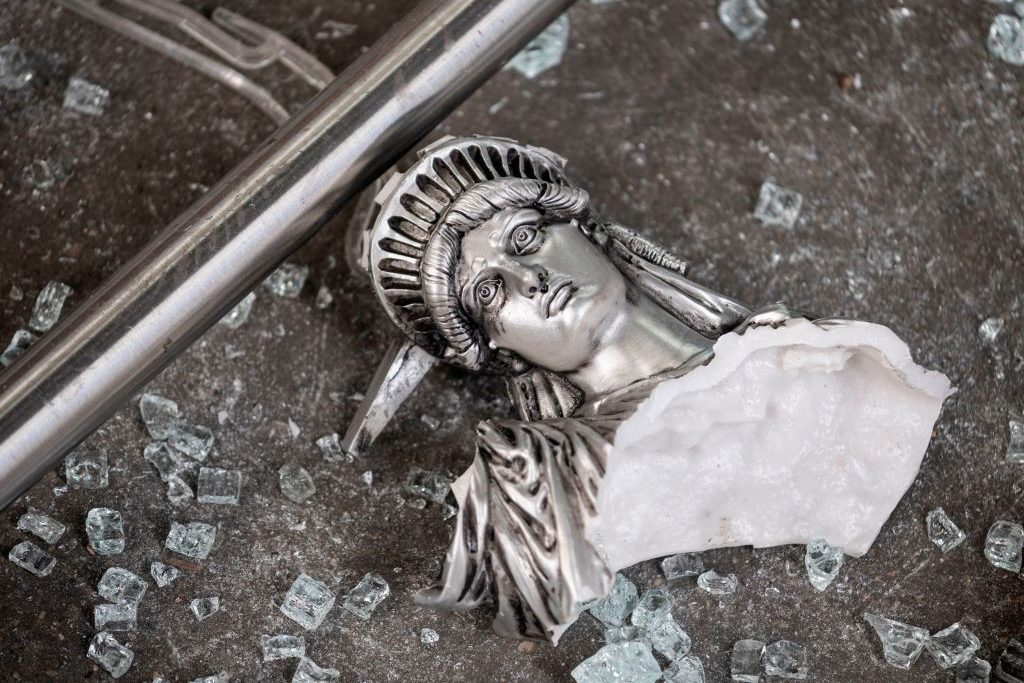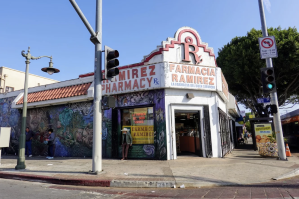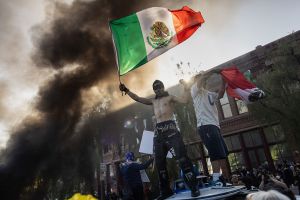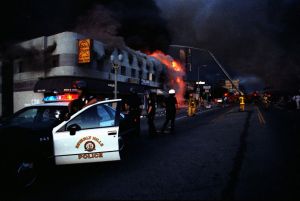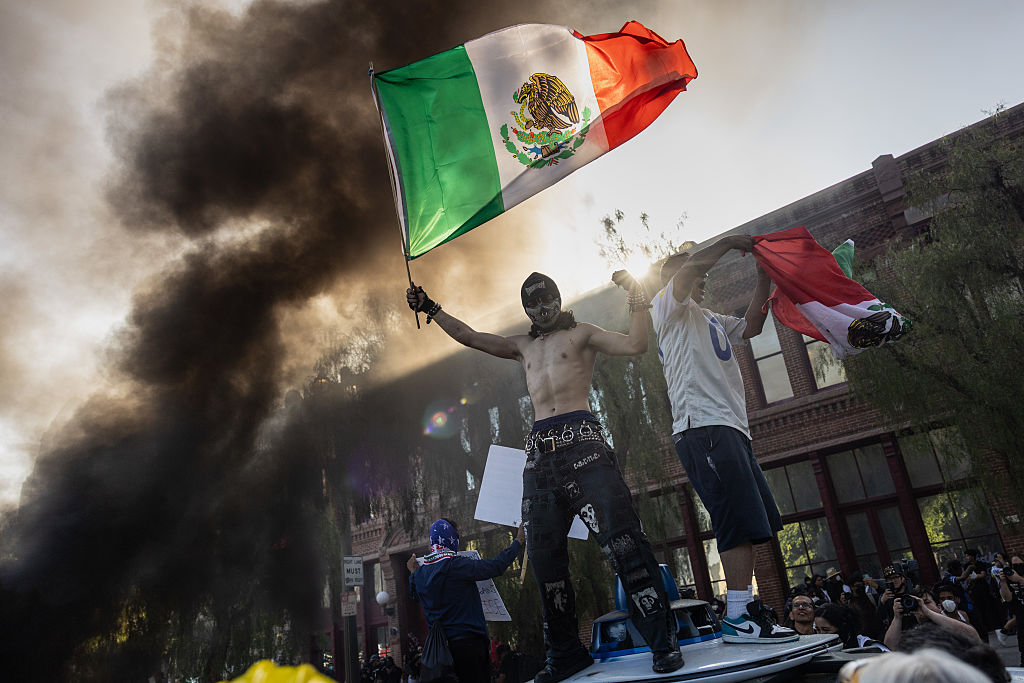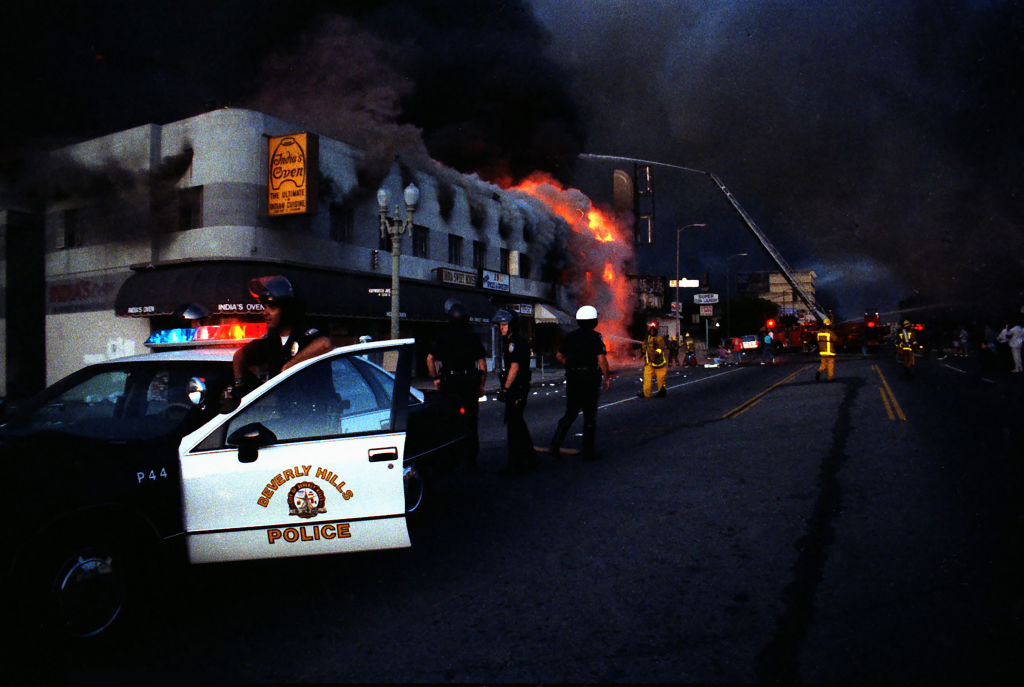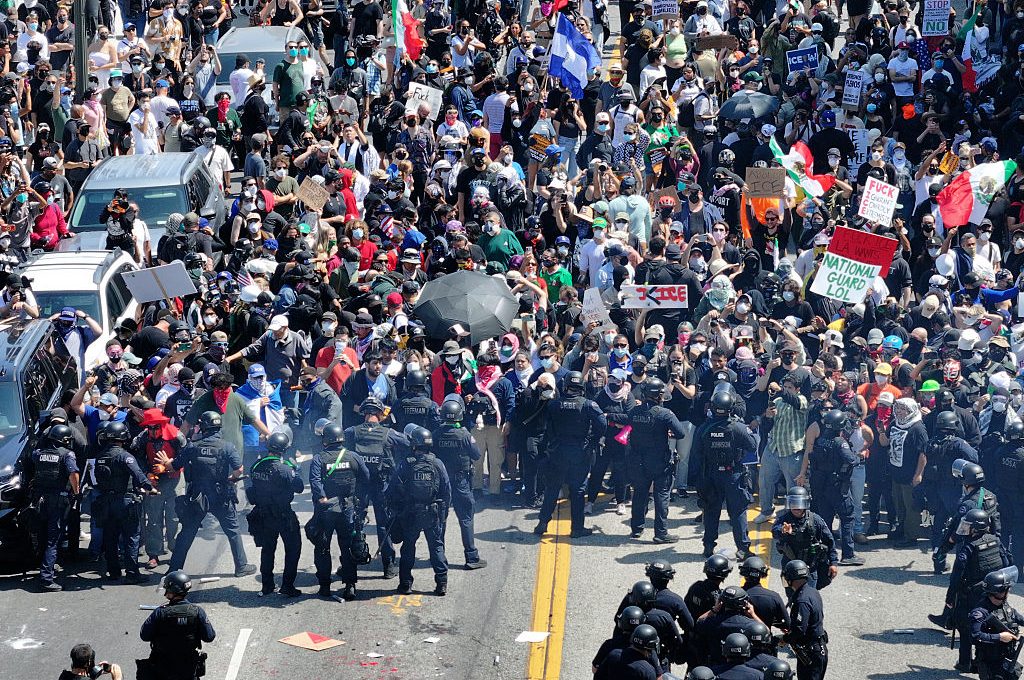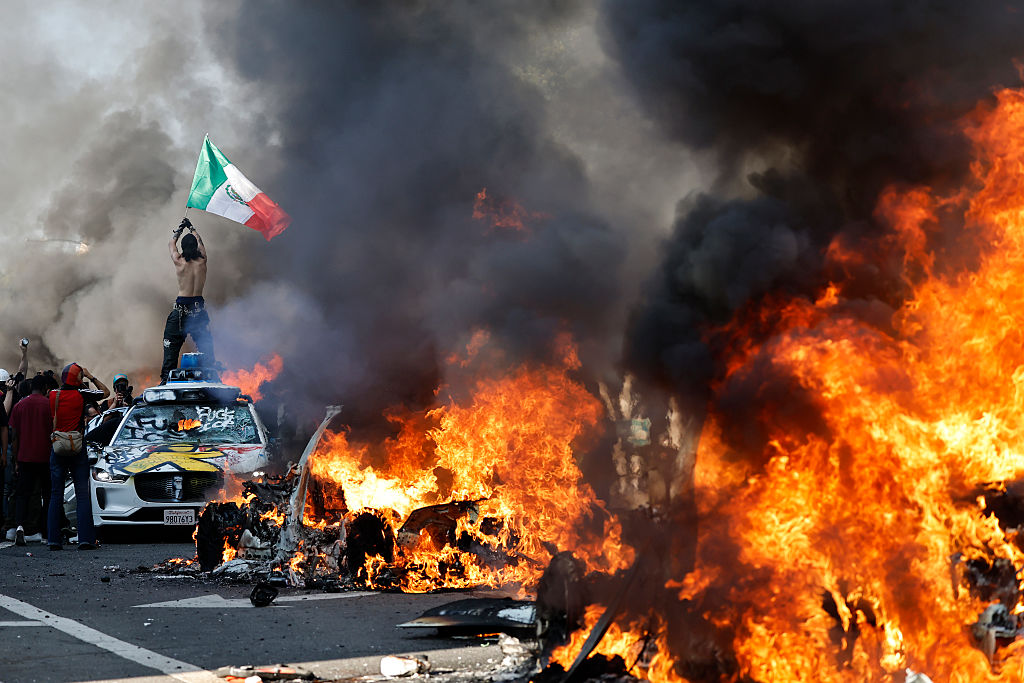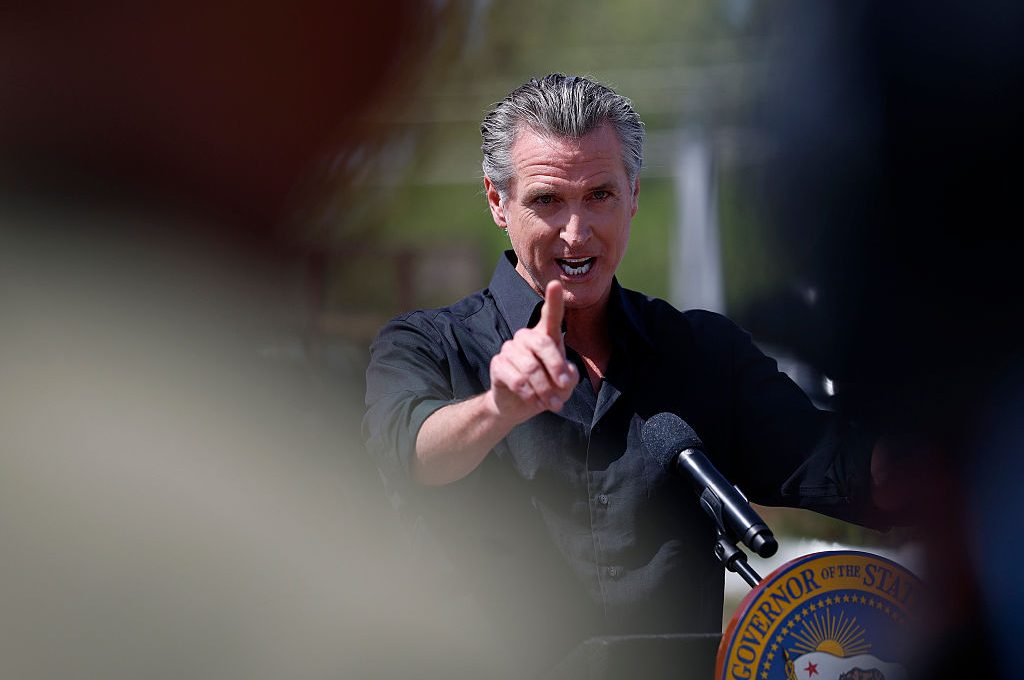The twin temptations of American liberalism are to radical excess and conservative stasis. Because liberalism is a practical philosophy of government, given its most comprehensive expression in the Democratic party, it sometimes lists left and other times right. The Minneapolis moment is different in that it sees liberalism lean in two directions at once and get it wrong on both counts.
Scenes of rioting, looting and the firebombing of a police station bring out the Rousseauean id of the liberal psyche and a righteous impatience to burn it all to the ground and start over. (‘Out of the rack and ruin of our gangster death/ The rape and rot of graft, and stealth, and lies/ We, the people, must redeem…/ And make America again!’) The drift towards radicalism on the center-left did not begin with the killing of George Floyd. Some American progressives are done with America, as the New York Times’s flawed, fervently defended and Pulitzer-winning 1619 Project illustrates. The taking of another black life has poured accelerant on this process.
The creeping of nihilism into the mainstream American left has brought with it a decadent attitude towards mob violence. If the mob believes it is justified, anything it does is justifiable. Commenting on the riots, the New York Times’s Nikole Hannah-Jones (creator of the 1619 Project) says: ‘Destroying property, which can be replaced, is not violence… When we have people who say people should respect the law — they’re not respecting the law because the law’s not respecting them. You can’t say that regular citizens should play by all of the rules when agents of the state clearly are not.’ We are so accustomed to being told speech is violence that it hardly fazes us to hear that violence is not.
CNN anchor Chris Cuomo monologues: ‘Too many see the protests as the problem. No, the problem is what forced your fellow citizens to take to the streets, persistent, and poisonous inequities and justice. Please, show me where it says protesters are supposed to be polite and peaceful.’ That would be the First Amendment, adopted, in part, to protect ‘the right of the people peaceably to assemble, and to petition the Government for a redress of grievances’. CNN’s primetime line-up: the last line of defense between Donald Trump and the Constitution they haven’t read.
Steven Thrasher, assistant professor in journalism at Northwestern University, writes in Slate:
‘As any military tactician or social justice organizer can tell you, direct action gets the goods. The destruction of a police precinct is not only a tactically reasonable response to the crisis of policing, it is a quintessentially American response, and a predictable one. The uprising we’ve seen this week is speaking to the American police state in its own language, up to and including the use of fireworks to mark a battle victory.’
Thrasher may believe that re-enacting the plot of Assault on Precinct 13 is a legitimate response to what he calls ‘the lynching of George Floyd’, but what is a liberal magazine like Slate doing publishing his manifesto?
Liberals have leapt on a leftwards-zipping conveyor belt that will carry them far from the philosophy that has until now defined them and defined American progress. They will have to accede to the slander that America is at root a racist enterprise systemically geared towards white supremacy. They will have to declare the rule of law illegitimate and the rule of the mob the path to justice. They will have to embrace racial division rather than work to overcome it. They will have, in short, to stop being liberals.
Radicalism might burn with a virtuous fury but it harbors its own prejudices, as rioters’ attacks on synagogues in Los Angeles and Richmond underline. Liberals should resolve to remain liberals, but that does not mean standing still. This is a moment to reassess American liberalism’s surrender to conservatism on criminal justice, traceable to the 1994 Crime Bill drafted by Joe Biden and signed by Bill Clinton. The Marshall Project best sums up this bloated sack of good intentions, bad intentions and terrible policies: ‘The crime bill did not inaugurate the era of mass incarceration, but it certainly escalated the scale of its impact.’ What it also did was cement a bipartisan consensus that to be ‘tough on crime’ meant more cops with bigger guns enforcing more laws with harsher penalties. Police, as the frontline of this authoritarian spasm, were transformed into civilian soldiers and symbols of fear for citizens, not least minorities.
In the roll call of black men killed by police, George Floyd is another name to be forgotten. Michael Stewart (Brooklyn; 1983; blunt force trauma; all officers acquitted) was meant to stick in the public consciousness, as were Amadou Diallo (Bronx; 1999; 19 gunshot wounds; all officers acquitted) and Samuel DuBose (Cincinnati; 2015; gunshot wound to the head; mistrial, hung jury, charges dismissed). Time isn’t a healer, it’s an accomplice. We don’t know if George Floyd was killed because he was black but we do know he was killed by a cop. For eight minutes and 46 seconds, an officer’s knee pressed down on his neck, all the while he pleaded: ‘I can’t breathe.’ That is not police brutality; that is sadism.
This is an immediate policy problem liberals can direct their energies to. Start by removing the roadblock to reform: police unions. Restrict collective bargaining to salary and benefits so that police commissioners and oversight bodies, not union negotiators, determine internal disciplinary regimes. Legislate mandatory 360-degree bodycams for all patrol officers and demilitarize the police by limiting procurement of armored personnel carriers, riot equipment, and military-grade weapons. (Between 2006 and 2016 US police forces acquired more than 83,000 M16s, an assault rifle favored by the Kurdish Peshmerga.) The next step up involves stripping police of the qualified immunity that makes it perversely difficult to bring civil rights suits against excessive force or racial discrimination.
[special_offer]
Overpolicing is only one dysfunction in a multi-dysfunctional criminal justice system. 55.7 percent of state prisoners (and only 7.8 percent of federal prisoners) are serving time for a violent offense and, while black prisoner numbers are falling, black male incarceration is still 5.8 times that of whites. Sentencing reform aimed at minimizing custodial terms for non-violent crimes should be a lively liberal cause.
The failed war on drugs has destroyed too many lives and too many families. Getting government out of the prohibition business would remove more than a quarter-million inmates from US prisons, 80,000 of them black. Liberals should also revive their opposition to the death penalty. For all the other arguments against capital punishment, racial bias should particularly trouble liberals: Black Americans constitute 13.4 percent of the general population but account for 42 percent of death row inmates. Democrats fearful of the electoral consequences of adopting a reform agenda should know they have Republican allies in organizations like Right on Crime and Conservatives Concerned About the Death Penalty.
The cry ‘no justice, no peace’ is in the air but without peace there can be no justice. Revolution and reaction can deliver one or the other but only liberalism promises both.
This article was originally published on The Spectator’s UK website.



